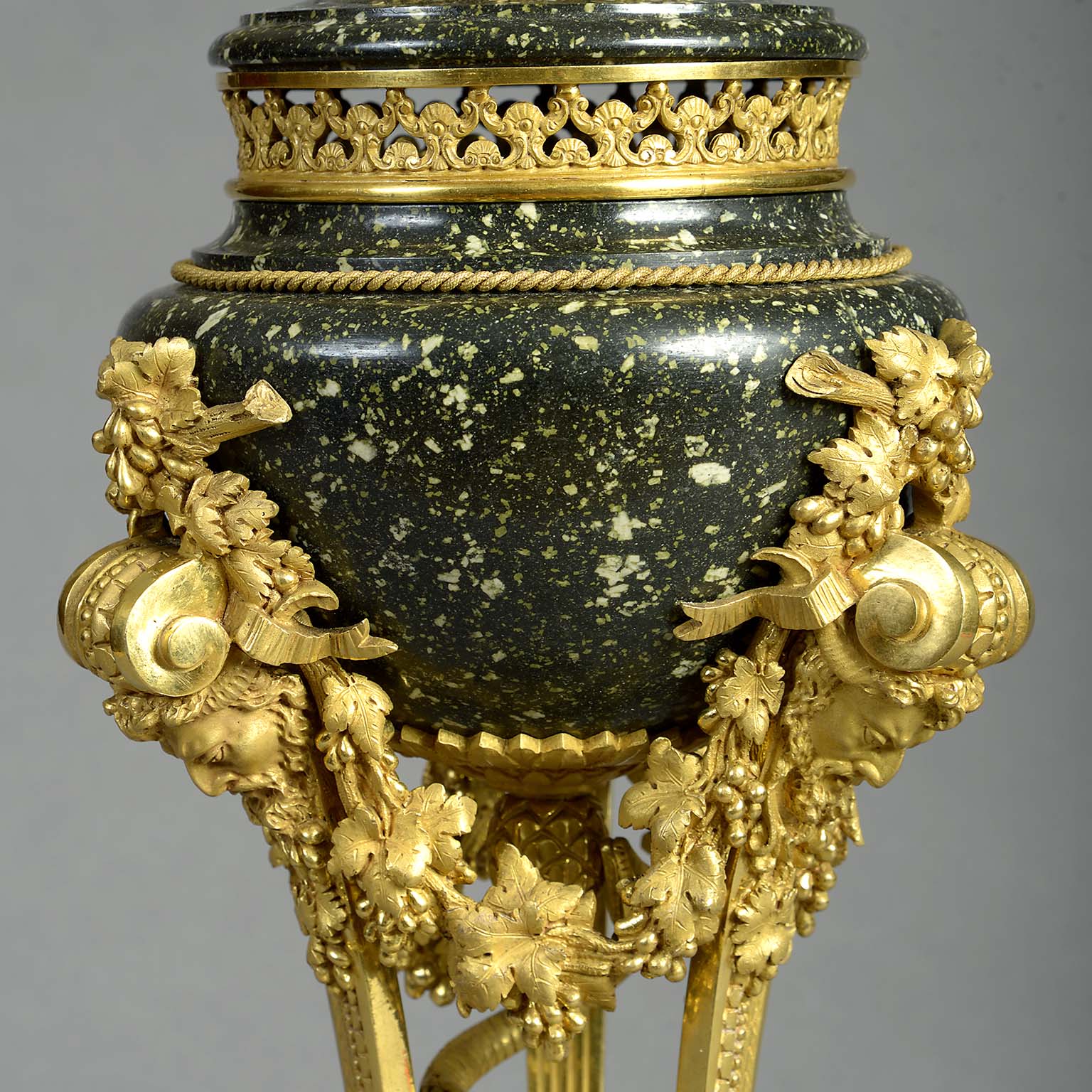Exbury House Ormolu and Imperial Egyptian Green Porphyry Brule-Parfums
THE EXBURY HOUSE PAIR OF ORMOLU AND EGYPTIAN GREEN PORPHYRY BRULE-PARFUMS AFTER A MODEL BY FRANCIS JOSEPH BELANGER AND PIERRE GOUTHIERE
France early 19th century
Exceptional condition with original mercury gilding
Each decorated with a grapevine, domed cover and pierced frieze above Satyr monopodia supports, centred by an entwined serpent on a circular base.
Height: 46.7 cm
Provenance:
Alfred de Rothschild (1842-1918) The Red Room at Halton House, Buckinghamshire
Lionel de Rothschild (1882-1942)
Edmund de Rothschild (1916-2009)
The Trustees of Exbury House
This model is based on the celebrated ormolu mounted jasper vase recorded in the sale catalogue of Louis Marie-Augustin, Duc d’Aumont, on the 12th December 1782 which is now in the Wallace Collection. The Duc d’Aumont was the First Gentleman of the King’s Bedchamber and commissioned his architect, Belanger, to design many of the fixtures and fittings for his houses. These incorporated hardstones and porcelains, many of which were mounted in gilt bronze, often by Gouthiere.
The design of the jasper vase and hence the brule-parfumes is though to be based on a marble bas-relief at the entrance to the Cesi Chapel in the Church of Santa Maria della Pace in Rome. In the 18th century it was believed that the chapel was designed by Michelangelo and as such was a building frequently studied, drawn and referenced in designs.
The rare green porphyry utilised in these Brule-Parfums is from Gebel Dokhan (Mons Porphyrites) Egypt.
Examples of which can be found in ancient architectural elements both in Rome and Constantinople.
Marmi Antichi Edizione De Luca page 278 illustration 120
One of these Brule-parfums is shown in a photograph of Alfred’s Red Room, Halton House.
Collections: Antiques, Latest Pieces, Sculpture & Objects
Share:





